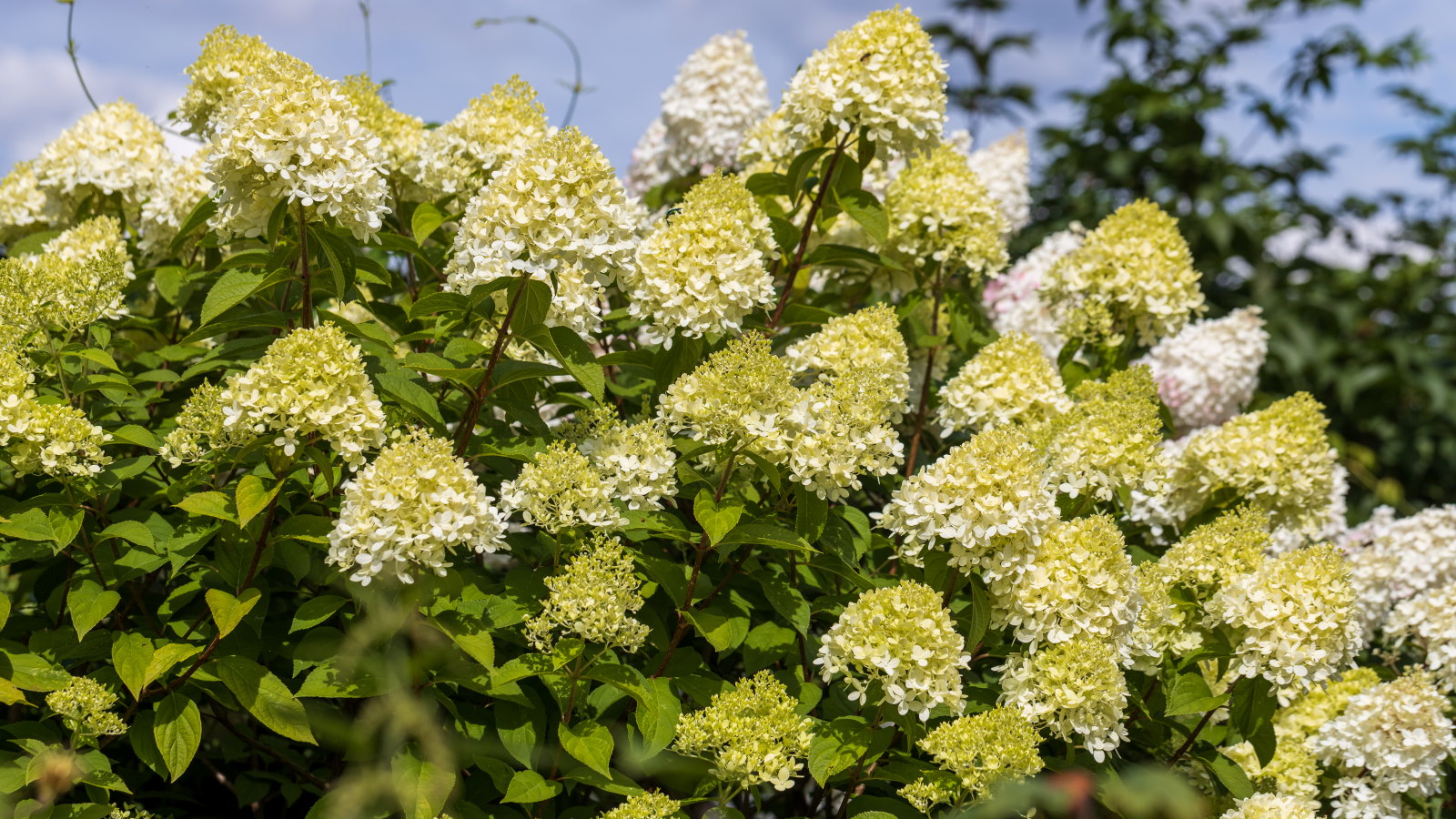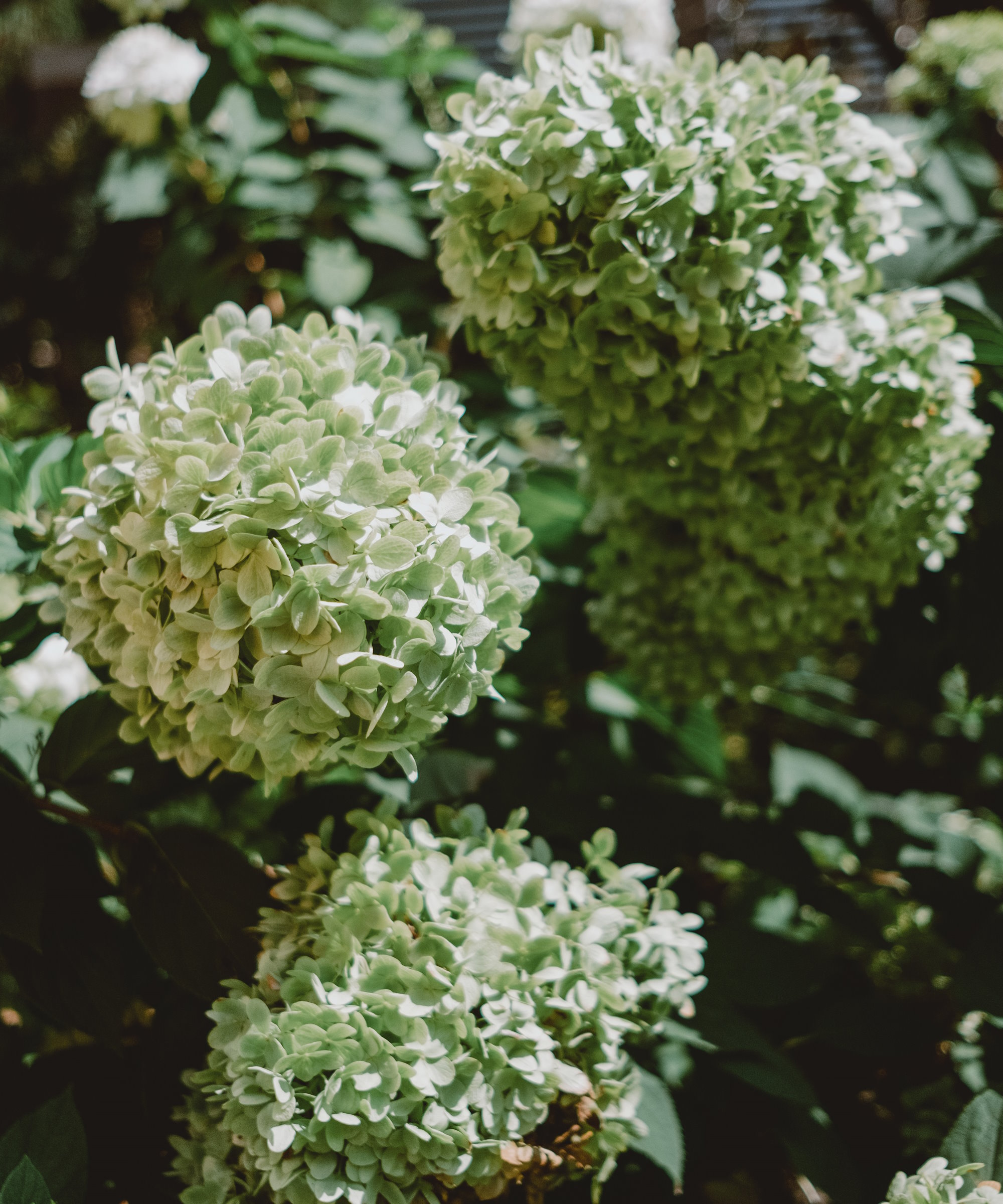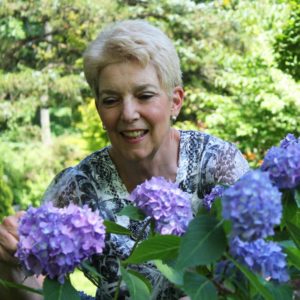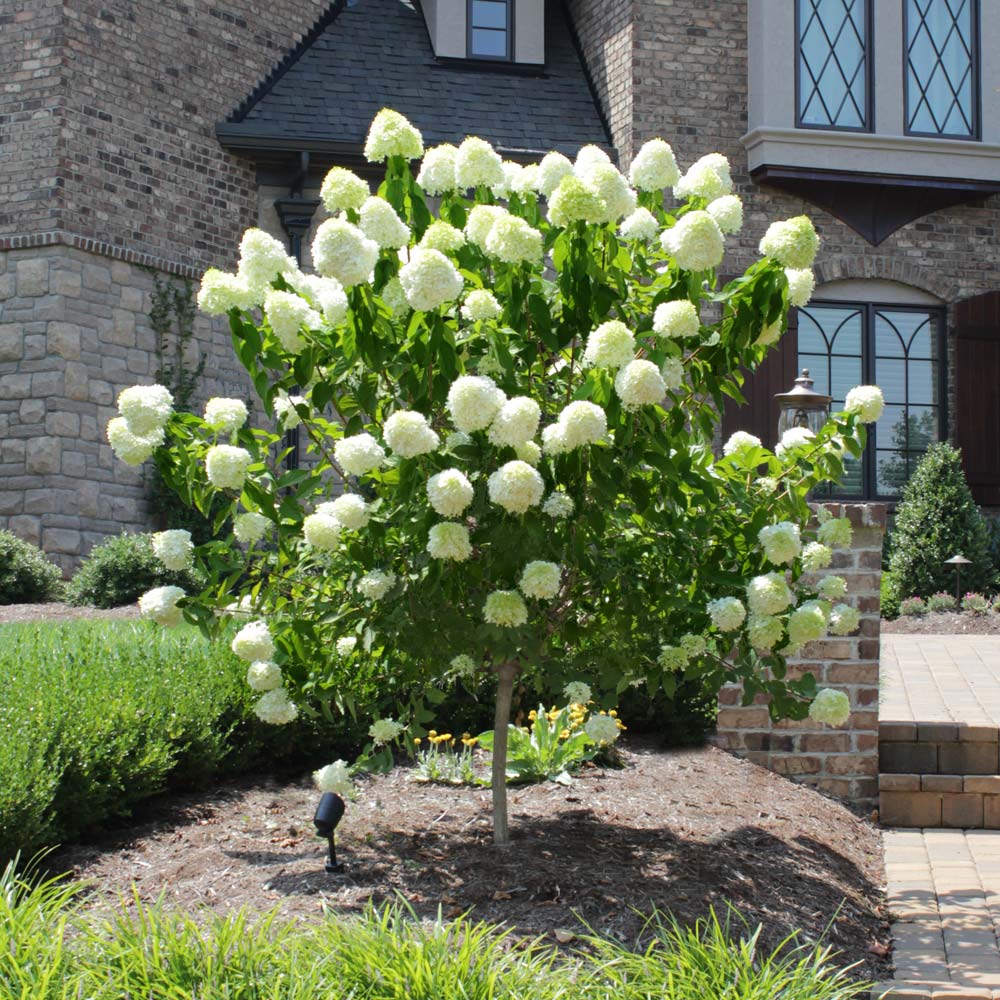When to prune limelight hydrangeas – and expert trimming tips for fantastic blooms
Getting the timing right for pruning ensures new, healthy growth to carry that year’s flowers


Limelight hydrangeas are really easy to maintain and, happily, pruning is very simple to do. It is an important gardening task that will have a positive effect on the appearance and health of the shrubs.
Hydrangea paniculata 'Limelight' is a hugely popular variety of panicle hydrangea, which produces large flowers in shades of light green and white from summer through fall. Limelight hydrangeas are fairly fuss-free and can grow happily in US hardiness zones 3-9.
If you would like to grow hydrangeas as part of your backyard planting scheme, limelight varieties will reach up to eight feet in height and width. They will bloom year after year in the right location with little maintenance required, other than pruning them once a year to generate new flowering wood.

Limelight hydrangea flowers fade from green to white
Should you prune limelight hydrangeas?
It is a very important task to prune limelight hydrangeas each year. As panicle hydrangeas flower on new wood, annual pruning will produce a flush of new stems to carry the year’s flowers.
When to cut back limelight hydrangeas

Limelight hydrangeas are commonly pruned in late winter or early spring
When planning when to prune hydrangeas, it will depend on the type you are growing. In the case of limelight hydrangeas in particular, the ideal time is when the plant is dormant. At this point, there is no active growth occurring and they can better handle the stresses of pruning.
Lorraine Ballato, author of Success with Hydrangeas, explains that ‘when the plant has lost its leaves naturally it is signalling that it is dormant’. While lots of people will often prune their limelight hydrangeas in late winter or early spring, she claims, based on the fact the shrub will be dormant, then ‘pruning can be done in late fall, winter, or early spring’.
‘This is a plant that develops its flower buds on new growth. The idea is to make the cuts before the plant sets its buds for the following summer. So no amount of winter weather, temperature fluctuations, crazy pruning, or winter animal browsing can impact those flower buds.
Design expertise in your inbox – from inspiring decorating ideas and beautiful celebrity homes to practical gardening advice and shopping round-ups.
‘However, if you garden in a severe winter climate with temps regularly below freezing, it's best to wait until spring. Gardeners in those climates need to allow for winter kill which can reduce the size of the hydrangea naturally.’
Pruning after the plant has naturally dropped its leaves does offer various advantages. These include being able to get a better look at the shape of the plant and it also helps with access, as you can get to all the branches easily to make clean pruning cuts.
While you can prune the plant into the spring, it is beneficial to get around to cutting sooner rather than later. Pruning too late in spring risks cutting off new growth and removing that year's flower buds.

Lorraine Ballato is a hydrangea expert and the the author of the international best selling book 'Success with Hydrangeas', available at Amazon. She is also an in-demand speaker throughout the US and the resident hydrangea expert at the New York Botanical Garden.
Tips for pruning limelight hydrangeas

Limelight hydrangeas produce blooms on new growth
As a general rule, any time you prune hydrangeas - which includes deadheading hydrangeas - you should use clean and sharp garden tools. This includes pruning shears and loppers that should be sanitized both before and after use. This can be done with a simple sanitizing spray, available at Amazon or in stores. As well as sharp tools ensure you make clean cuts, which the shrub will find easier to heal, clean garden tools reduce the risk of spreading diseases around the garden.
It is often recommended to not cut off too much when pruning limelight hydrangeas. The best practice is to remember the one-third pruning rule and not remove lots more than a third of the growth to keep the plant healthy and productive. Limelight hydrangeas should be cut back by around one-third, to a maximum of one-half, of their growth. Removing this much growth will leave a strong frame of older wood that can support the new flowering growth that will appear this year.
The issue often can be that being overzealous and pruning excessively can actually reduce flowering, as the shrub will be stressed. This can mean it puts out lots of weak growth, rather than strong new branches to carry this year’s blooms - poor pruning can be a reason why a hydrangea is not blooming.
When pruning, cut branches just above healthy buds and make your cuts at a 45-degree angle. This ensures that rainwater runs off the cut and the moisture does not sit on top of a pruning cut and causes disease.
Shop tools for pruning limelight hydrangeas

Felco No. 2 pruners are nearly universally beloved as the best pruners on the market. They're comfortable, hard-wearing, razor-sharp, and best of all, every part can be replaced - you never need to buy another set of pruners again.
FAQs
Can I prune my limelight hydrangea in the fall?
As recommended by Lorraine Ballato, you can cut back limelight hydrangeas in the fall. However, it should be dependent on your US hardiness zone. If you live in a very cold climate with substantial winter frosts, then it is better to wait until spring. Pruning hydrangeas in fall in a location with severe winters risks the frosts getting into the pruning wounds. Cutting too early in fall would also be a pruning mistake, as the hydrangea could grow new shoots when not dormant and these would be easily damaged by the winter cold.
Should you deadhead limelight hydrangeas?
Deadheading hydrangeas is not strictly necessary when it comes to the limelight types, however, the practice can offer one major advantage. It will help tidy the shrub and the garden as faded hydrangea blooms can be seen as less visually appealing. However, some people may embrace the natural look and like the fact that old hydrangea blooms can look lovely tinged with frost as part of a winter garden.
It is worth noting that all hydrangea varieties should not be pruned in the same way. It would be a hydrangea pruning mistake to treat them all identically, as you could lose a whole year’s worth of blooms. It's wise to understand what types you grow, and whether they flower on new or old wood before pruning your hydrangeas.

Drew has worked as a writer since 2008 and was also a professional gardener for many years. As a trained horticulturist, he worked in prestigious historic gardens, including Hanbury Hall and the world-famous Hidcote Manor Garden. He also spent time as a specialist kitchen gardener at Soho Farmhouse and Netherby Hall, where he grew vegetables, fruit, herbs, and cut flowers for restaurants. Drew has written for numerous print and online publications and is an allotment holder and garden blogger. He is shortlisted for the Digital Gardening Writer of the Year at the 2025 Garden Media Guild Awards.


